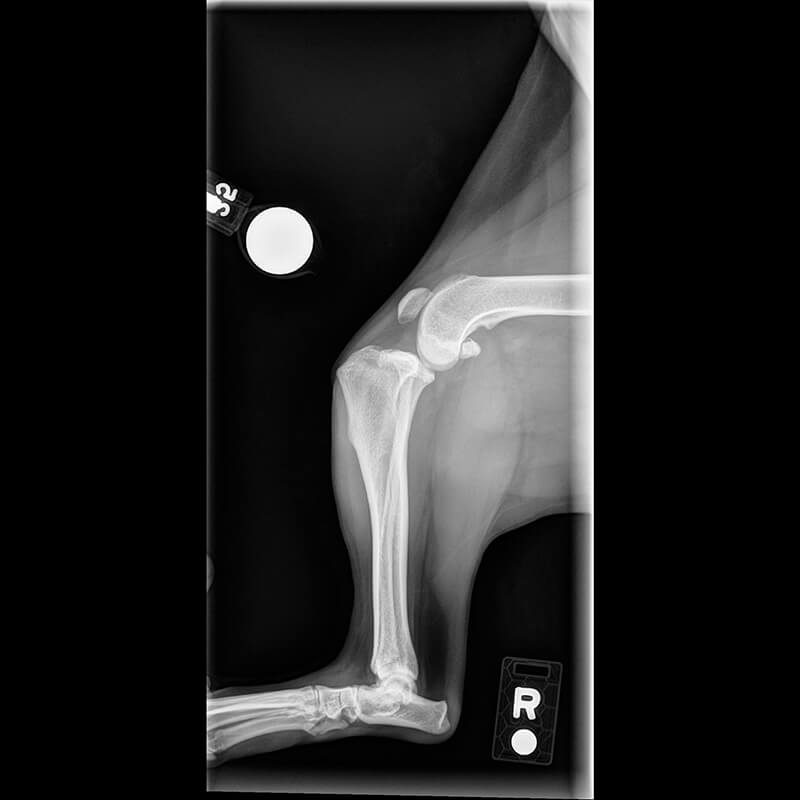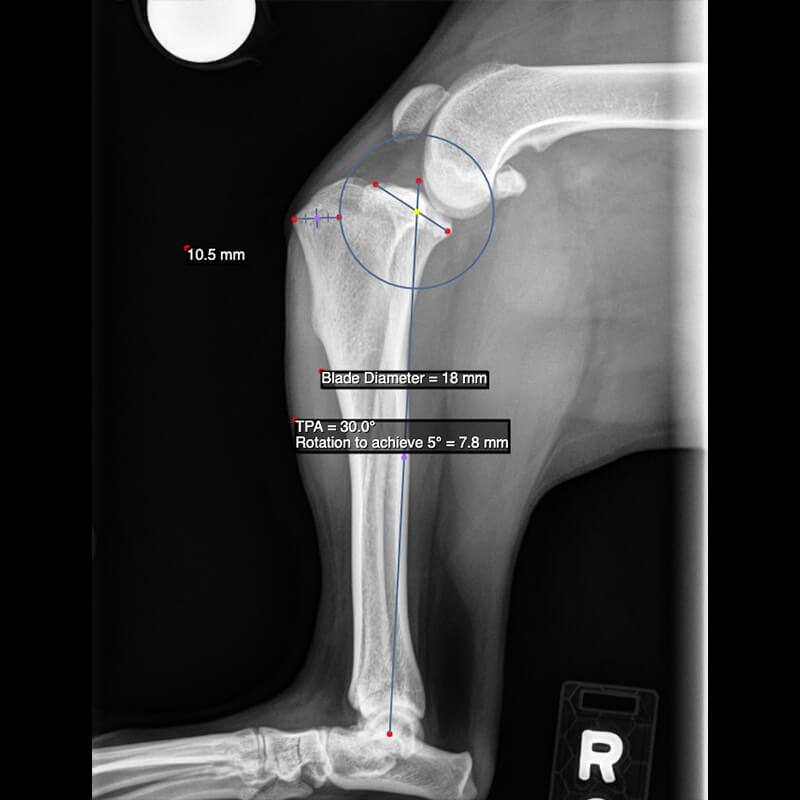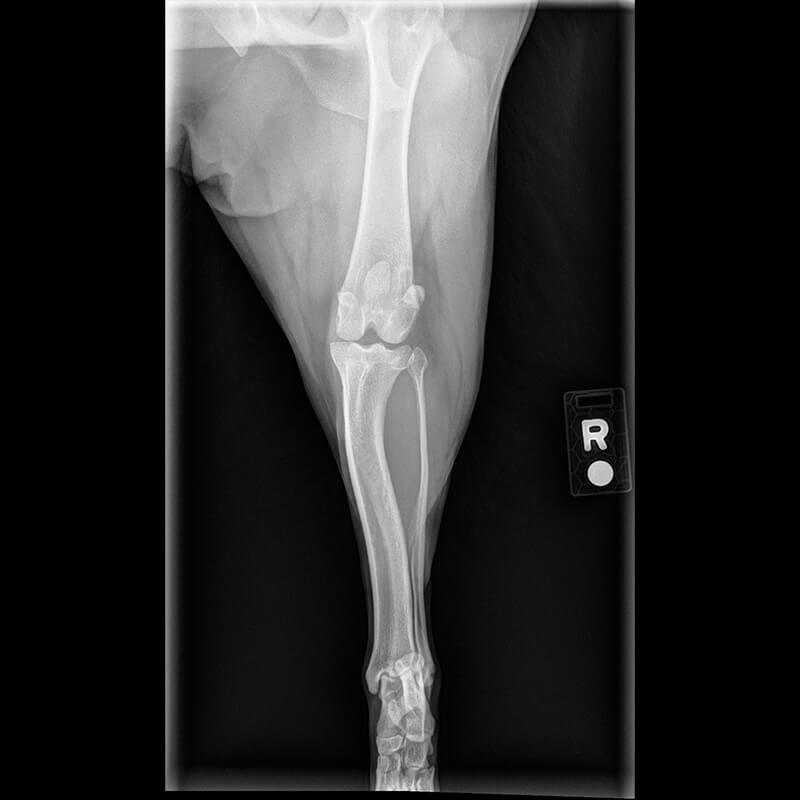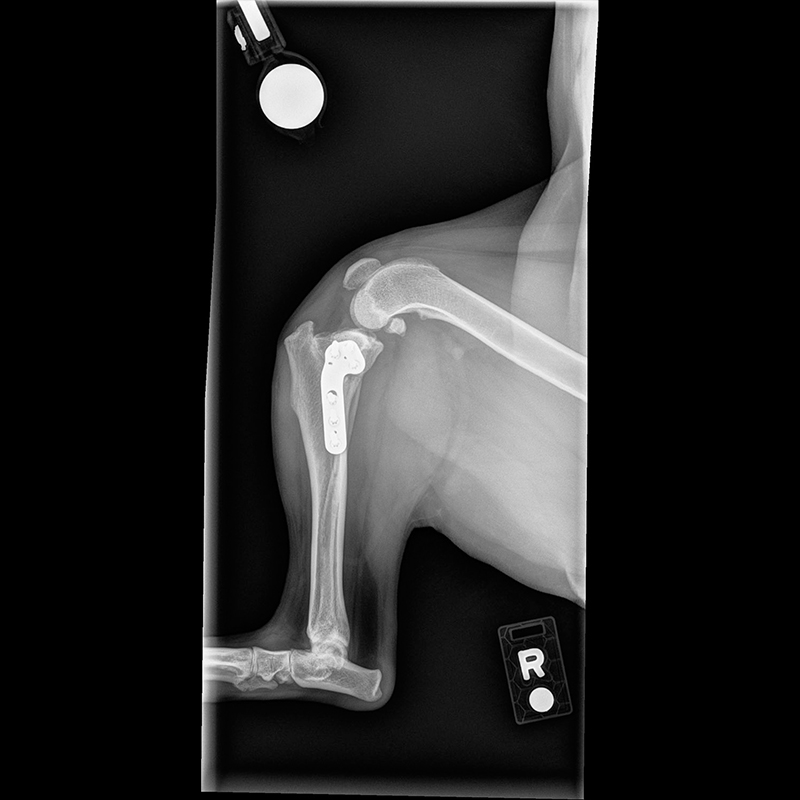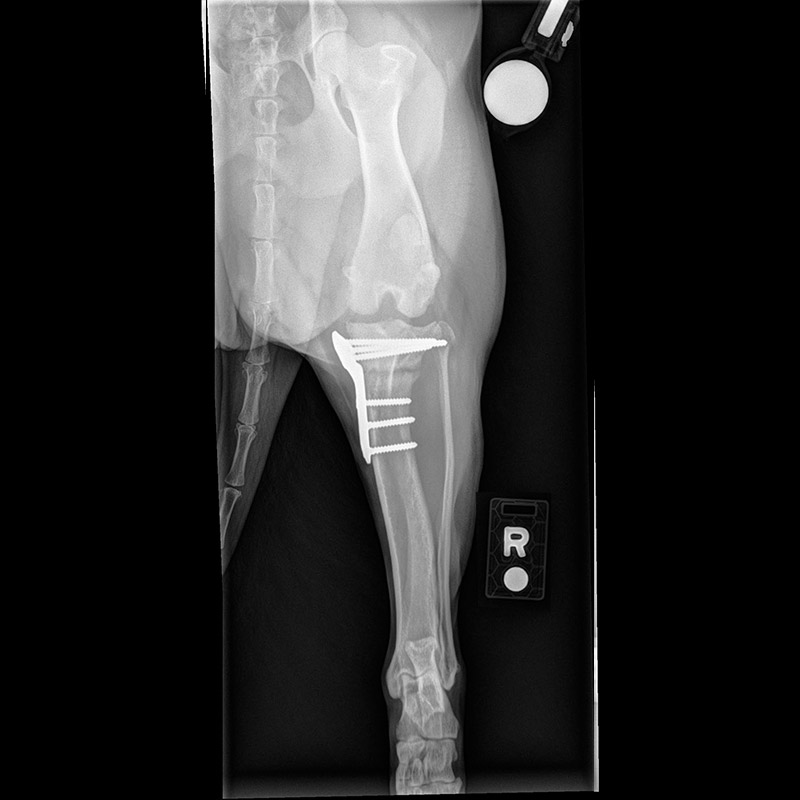What Happens If My Pet Ruptures Their CCL?
The CCL is located within the knee (or stifle) joint in your pet. Its primary function is to keep the joint stable by preventing the tibia (shin bone) from sliding forward and rotating inward relative to the femur (thigh bone). When the CCL ruptures, when your pet bears weight, the tibia slides forward relative to the femur, gradually wearing down the cartilage of the knee and causing worsening osteoarthritis. The sliding motion of the tibia also causes painful stretching and secondary thickening of the surrounding tissues, which decreases the range of motion of the knee over time. Many dogs with this problem can develop debilitating arthritis.

Signs of a CCL Tear
Some potential clinical signs of a torn CCL include:
- Mild lameness (occasional limping)
- Severe lameness (constant limping, holding up one limb)
- Pain (reluctance to move, vocalizing, sleeping more often, eating less)
- Clicking noises during walking
Ultimately, a ruptured CCL will be diagnosed by your veterinarian, who can check your pet for joint swelling and instability and perform X-rays for a more complete assessment. If surgery is recommended for your pet, your veterinarian can refer you to Fetch, and our team will discuss CCL tears with you and may help you schedule a TPLO procedure if appropriate for your pet.
How We Perform TPLO Surgery
With TPLO surgery, stability of the knee joint is achieved by changing the biomechanics of the knee joint so it does not need to CCL for stability, rather than replacing the ligament itself. In dogs, the angle of the tibial plateau, the top sloping portion of the tibia bone, is steeper than in humans, ranging from 25 to 30 degrees, which makes them more prone to CCL tears. The goal is to reduce the angle of the tibial plateau, because once the angle is reduced, there is no force pushing the tibia forward and the knee is therefore stable when your pet bears weight on the limb.
We make a curved cut at the top of the tibia bone and rotate this top cut section (which includes the tibial plateau) to level out the slope. Next, we place a specially designed plate and locking screws onto the tibia, to stabilize the tibia while the bone is healing. With the steep incline of the tibial plateau now reduced, the tibia will no longer slide forward when your pet bears weight on the limb.
At Fetch, we use the Arthrex TPLO Locking Plate System, which is the gold standard for TPLO surgery. This equipment is designed to ensure optimal plate placement and provide maximum stability to the knee joint.
What Does TPLO Surgery Achieve?
Our primary goal with TPLO surgery is to relieve your pet’s pain and improve the function of their knee joint. The main benefits we aim to achieve with this procedure include:
- Optimal range of motion in the joint
- A quicker recovery
- Reduced risk and severity of arthritis
- Ability to resume everyday activity (work or sport) once the joint is healed
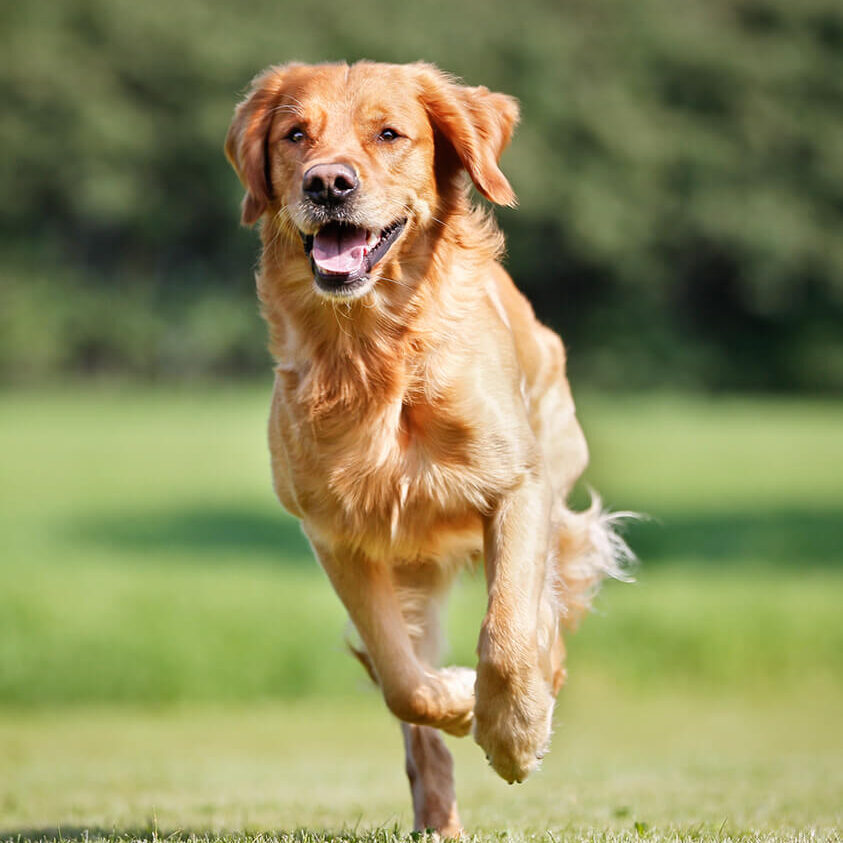
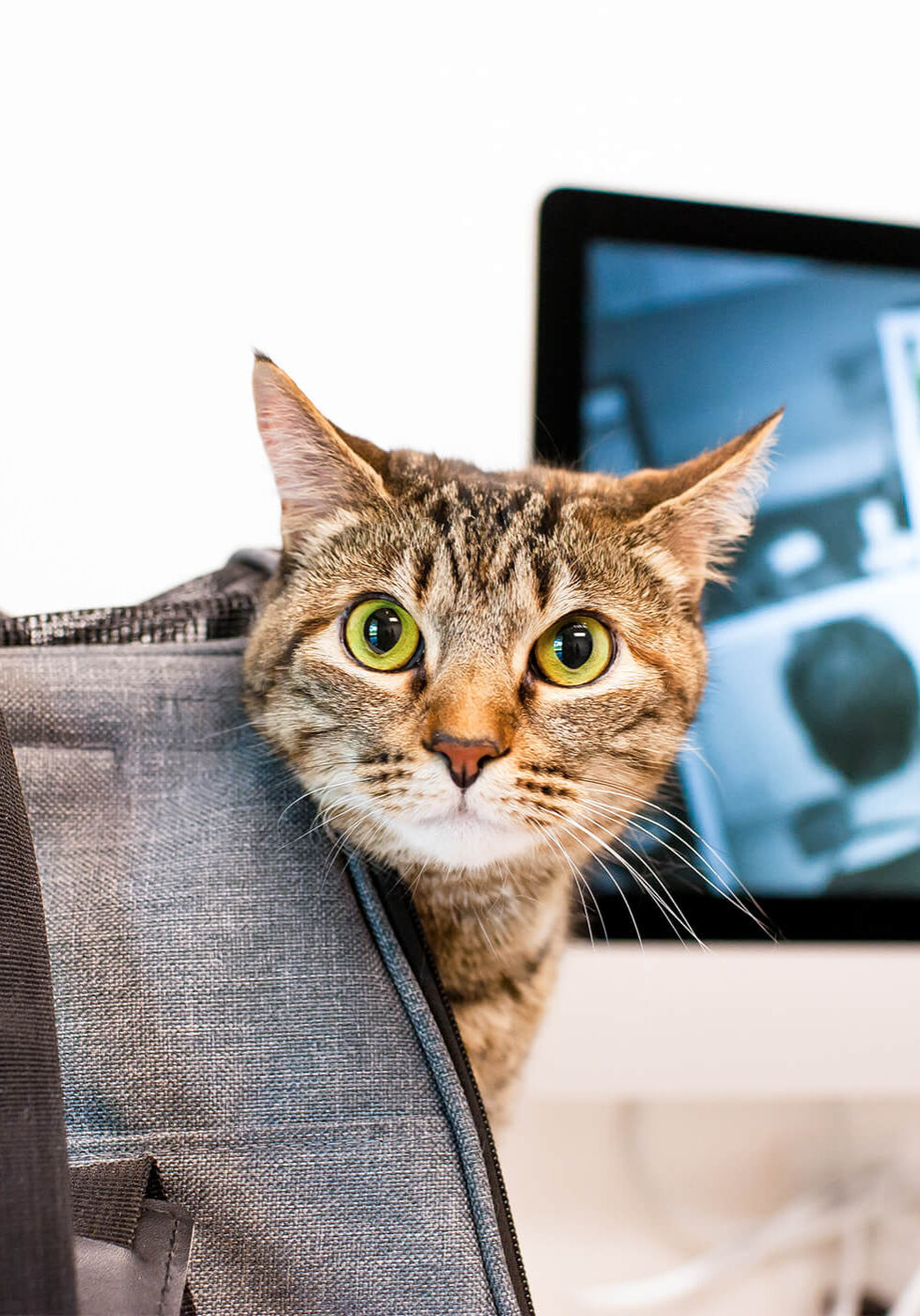
How Quickly Will My Pet Recover from TPLO Surgery?
TPLO surgery generally boasts a quicker recovery time for patients compared with other CCL repair surgeries. Some dogs start walking on the treated limb within 24 hours of surgery, but often it may take 5-7 days for patients to begin consistent weight bearing on the limb. Limb use gradually improves every week following surgery. It is important to note that the severity of the ligament tear and overall injury to the joint could affect your pet’s recovery time; a partial tear can heal more quickly, but a full tear or a concurrent meniscal tear may take longer.
For a more accurate timeline of your pet’s post-TPLO surgery recovery, your surgical specialist here at Fetch will consult with you about every step of the procedure and the care your pet will require in the following weeks. We will also work closely with your regular veterinarian to ensure consistent follow-up care.
Before and After
Pre-Op
Prior to surgery, we performed calibrated radiographs (x-rays) of your pet’s stifle. The goal of these radiographs are to make specific measurements to determine the angle of your pet’s tibial plateau and the size and shape of the bone itself in order to help determine optimal bone cut and implant placement.
8 Weeks Post-Op
Post-operatively, prior to recovering your pet from anesthesia, we take radiographs in order to determine that the tibial plateau is at an appropriate angle to stabilize the stifle and verify that the implants are appropriately positioned.


